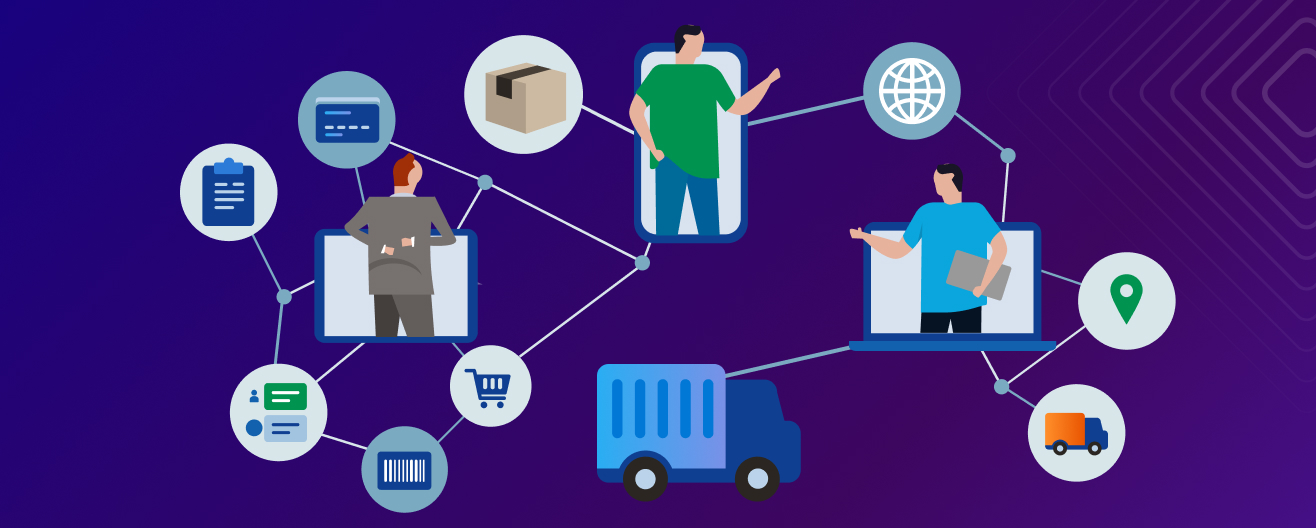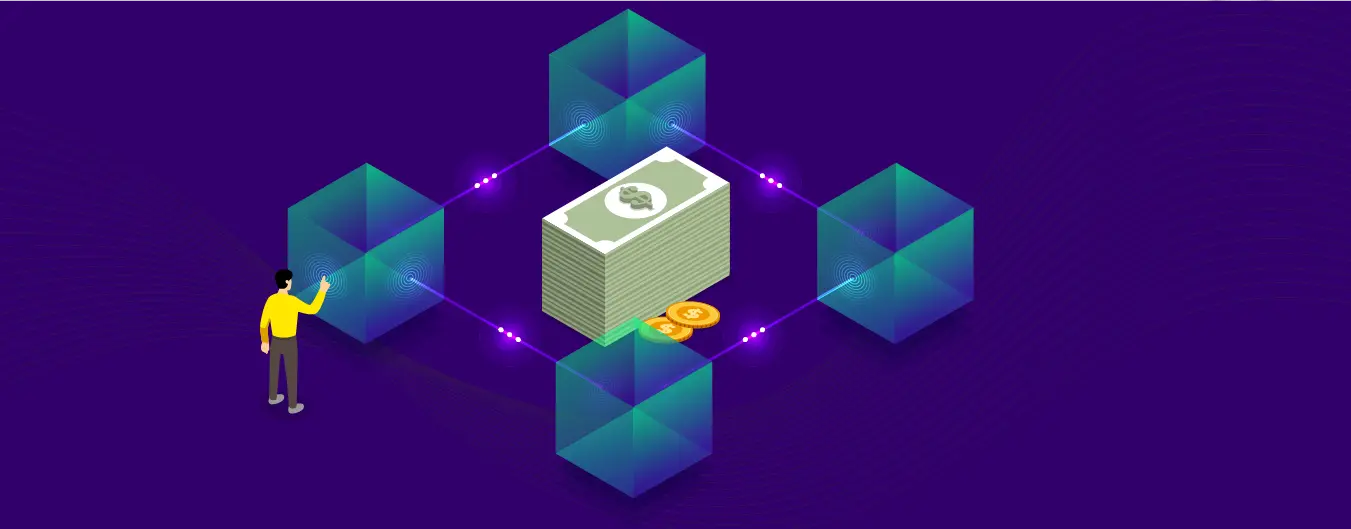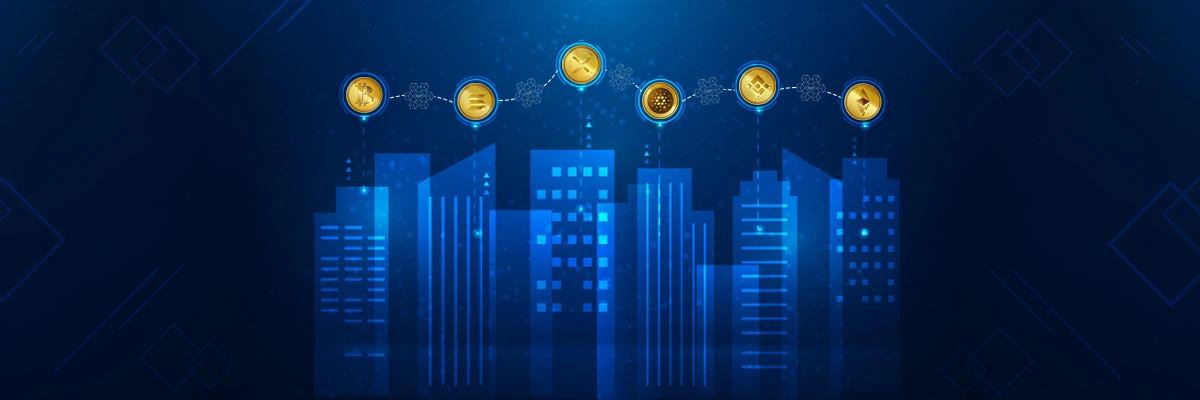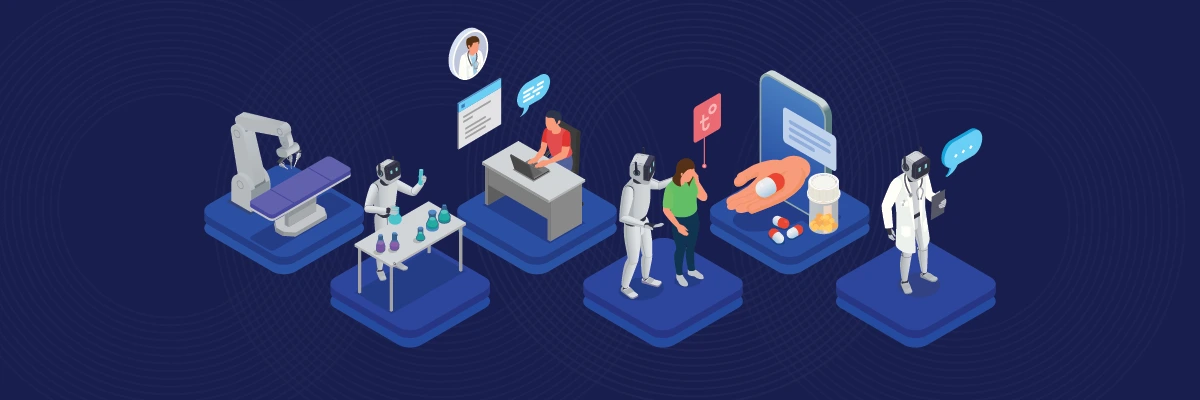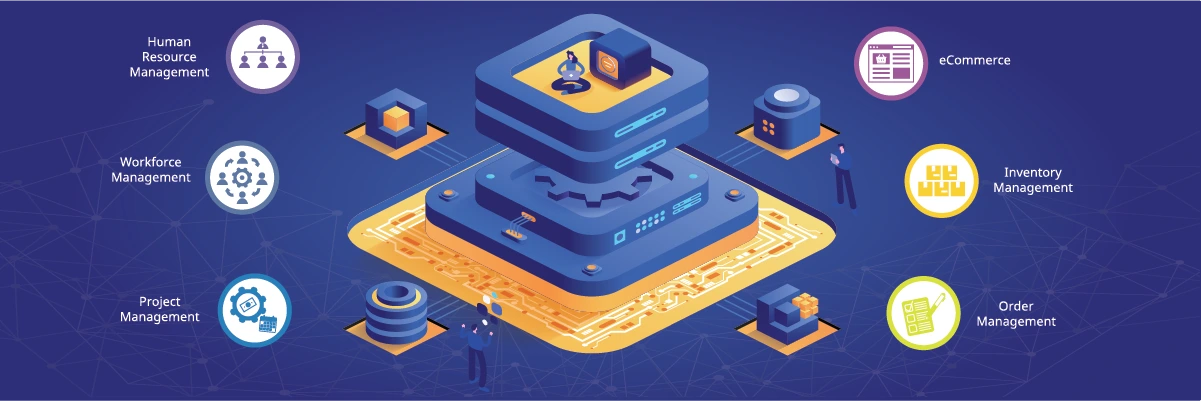
As businesses look for ways to stay competitive and efficient, the need for smarter, more connected systems has grown. Traditional ERP (Enterprise Resource Planning) systems help businesses handle everything from finance and inventory to HR and production.
But now, a powerful new technology blockchain is changing the game. Blockchain integration with ERP can bring better transparency, data security, and trust across the supply chain and business processes. To successfully leverage these advantages, businesses are increasingly looking to hire blockchain developers with the expertise to implement these solutions effectively.
Integrating blockchain with traditional ERP systems means combining blockchain features such as decentralized data, tamper-proof records, and real-time sharing with the structured workflows of ERP software.
It creates blockchain-enhanced ERP systems that are more efficient, secure, and reliable.
For example, in supply chain management, blockchain ensures that every product movement is tracked and verified, helping reduce fraud and errors. These ERP blockchain integration solutions are already showing results in industries like healthcare, logistics, and manufacturing.
However, businesses still face some hurdles. Knowing how to integrate blockchain with ERP systems involves overcoming technical and data compatibility challenges.
Despite these, the benefits of blockchain in ERP integration are too big to ignore. In this blog, we will explore key blockchain use cases in traditional ERP software, discuss challenges in merging blockchain and ERP, and look at real-world examples of ERP and blockchain working together.
Using blockchain with ERP systems makes work faster, clearer, and safer. It helps companies save money, avoid mistakes, and follow rules easily.
ERP (Enterprise Resource Planning) is a type of software that helps businesses manage their essential operations in one unified system. Instead of using separate tools for different departments, an ERP system connects everything, allowing for better coordination and decision-making across the company.
Core activities managed by ERP software include:
By bringing all these functions under one roof, ERP systems help reduce errors, speed up workflows, and improve overall efficiency. Teams can access the same up-to-date data, which promotes consistency and avoids duplication of efforts.
Some of the most widely used ERP platforms are:
While ERP systems are powerful inside a company, they often face limitations when data needs to be shared securely across multiple organizations. This is where blockchain integration with ERP becomes useful.
Blockchain adds trust and transparency to these systems, making blockchain-enhanced ERP systems ideal for industries such as manufacturing and logistics. Businesses are now exploring ERP blockchain integration solutions to overcome these challenges and unlock new efficiencies.
Blockchain is a digital technology that records information in a secure, transparent, and tamperproof way. It works like a digital ledger where data is stored in small units called blocks. These blocks are connected in a sequence, forming a chain that gives the blockchain its name.
While blockchain is best known for powering cryptocurrencies such as Bitcoin, its real strength lies in secure data sharing across multiple parties.
It is especially useful for businesses that need to work with partners, vendors, or customers. That is why more companies are exploring blockchain integration with traditional ERP systems to build trust, enhance visibility, and streamline processes.
It leads to powerful blockchain-enhanced ERP systems, solving many limitations found in traditional ERP setups These are the following important features of blockchain:
ERP systems are powerful tools for managing a company’s internal operations such as tracking inventory, managing finances, and handling employee data. But when it comes to working with outside partners, vendors, or customers, traditional ERP systems often fall short.
By integrating blockchain with traditional ERP systems, businesses can fill this “trust gap.” Blockchain adds an extra layer of security and verification, ensuring that the data shared between companies is accurate, secure, and cannot be changed without detection.
ERP systems face the following challenges:
This is where blockchain technology becomes valuable. As more companies adopt blockchain-enhanced ERP systems, they are unlocking new levels of efficiency and trust across their operations.
The first step is to find areas where blockchain can improve your ERP. Look for parts of your business that involve multiple stakeholders, such as vendors, logistics partners, or government agencies. These areas usually need trust, real-time data sharing, and verifiable records perfectly fit for blockchain.
These are the following use cases of integration of Blockchain in traditional ERP software:
This step helps you focus your efforts on high-impact areas where ERP blockchain integration solutions can deliver immediate value.
Not all blockchain platforms are the same. Choose one that fits your business goals, privacy needs, and technical environment. Your choice will affect how your blockchain interacts with your ERP system and how scalable your solution will be.
These are some of the following Platform:
The right platform supports reliable blockchain use cases in traditional ERP software, making integration smoother and more effective.
This step involves creating a technical bridge between your existing ERP and the blockchain platform. Most companies use middleware or APIs to make both systems talk to each other. This integration must ensure that data remains consistent, secure, and up to date in both systems.
These are major architectural components:
A well-structured integration layer forms the core of any successful blockchain-enhanced ERP system.
Smart contracts are code scripts that run on the blockchain. They automatically execute tasks when predefined conditions are met without human involvement. They reduce delays, prevent disputes, and ensure everyone follows the same rules.
Use smart contracts for:
Smart contracts are crucial for blockchain for supply chain ERP management, making your ERP workflows more responsive and reliable.
Before launching a full-scale rollout, start with a pilot project. Choose a single department, supplier, or product line to test integration. This helps catch errors early, gather feedback, and build internal confidence.
These are the following pilot project benefits:
Successful pilot programs pave the way for larger ERP blockchain integration solutions.
Technology alone does not drive success people do. After testing, train all departments that will interact with the new system. Help them understand the benefits of blockchain, how to use the new tools, and what is changing.
Training should include given below points:
This ensures smooth adoption and prepares everyone to benefit from blockchain integration with ERP.
Integration does not end at launch. Ongoing monitoring ensures the system runs smoothly, data stays accurate, and you keep improving based on new challenges or business needs.
Here is the list of the crucial task:
This continuous improvement ensures your blockchain-enhanced ERP system remains effective and future-ready.
Combining ERP systems with blockchain technology creates a powerful solution that goes beyond basic process automation. While ERP handles internal operations, blockchain adds trust, transparency, and real-time connectivity between business partners.
Together, they improve data reliability, reduce costs, and create smarter workflows. Let’s look at the top benefits of blockchain integration with ERP and how this combination is transforming industries.
One of the biggest benefits of integrating blockchain with ERP is increased transparency. Every transaction or record entered on the blockchain is visible to all permissioned users. This means that suppliers, manufacturers, and customers can all access the same reliable data.
This transparency builds trust between business partners. It also helps reduce disputes, as all parties can verify when a shipment was sent, when it was received, or what was agreed upon in a contract. Here are the following benefits:
Blockchain allows businesses to track the complete journey of a product from raw material to final delivery. This is especially valuable in industries such as food, pharmaceuticals, and fashion, where safety, quality, and authenticity are critical.
When ERP systems are linked with blockchain, every movement or update in the supply chain is recorded permanently. This ensures full traceability at every stage. These are the following benefits:
Blockchain is designed to be tamper-proof. Once data is entered, it can’t be changed or deleted. This adds a layer of protection to the information stored in your ERP system. It helps detect fraud, prevent unauthorized changes, and ensure data integrity.
When combined with ERP, it creates a highly secure environment for storing sensitive business data. Here are the following major benefits:
With blockchain, data is shared in real time. For example, when a product is shipped, received, or inspected, that update is instantly available to all parties in the network. This allows companies using ERP to respond faster to changes and make better decisions.
Real-time sharing reduces delays, eliminates the need for constant follow-ups, and improves coordination.
These are the following key benefits:
Manual tasks such as paperwork, reconciliation, and audits take time and resources. Blockchain simplifies these tasks by automating data validation and reducing the need for third-party verification. When integrated with ERP, it minimizes manual work, reduces human error, and leads to faster processing.
This results in significant cost savings across the supply chain and internal operations. Here are the following major benefits:
Smart contracts are digital agreements stored on the blockchain that automatically execute when specific conditions are met. For example, when goods are delivered, a smart contract can release payment instantly without waiting for human approval.
When these smart contracts are integrated with ERP systems, business processes like procurement, invoicing, and compliance become faster and more reliable. These are the key benefits of:
Blockchain integration with ERP systems is solving real business problems across various industries. While ERP systems manage internal processes, blockchain adds trust, transparency, and secure data sharing between companies.
Together, they form blockchain-enhanced ERP systems that are more accurate, efficient, and reliable. Let’s explore key areas where this integration works best.
In a supply chain, products move through multiple suppliers, transporters, and vendors. Traditional ERP systems handle internal tracking well, but they often lack visibility once the product leaves the company.
By integrating blockchain with ERP, every movement of goods can be securely recorded and shared across all parties involved. Everyone in the supply chain can see the same verified data, making it easier to manage operations and ensure product quality.
Medicines often pass through many hands before reaching the end user. This increases the risk of counterfeit drugs and data errors.
Blockchain ensures that every transfer of a drug is recorded securely, while the ERP system manages inventory, compliance, and logistics. The result is a tamper-proof trail of the product’s journey, which protects patients and improves trust.
In manufacturing, businesses depend on many different suppliers for parts and materials. When blockchain is added to ERP, it ensures that all components come from approved and verified sources.
Every item can be tracked for quality, compliance, and source. This creates more reliable manufacturing processes and faster problem resolution if an issue arises.
ERP systems manage financial data, but tracking changes or verifying the accuracy of records can be difficult. Blockchain solves this with a secure, time-stamped ledger that automatically records all transactions.
Once data is written to the blockchain, it cannot be changed, helping prevent fraud and simplifying audits.
In real estate and other asset-heavy sectors, paperwork and ownership verification can be time-consuming. ERP systems can manage property records and transactions, but adding blockchain creates a secure, unchangeable record of ownership and legal documents.
This helps reduce disputes, speed up transactions, and improve trust between parties.
Merging blockchain with ERP systems offers great benefits, but it is not without challenges. From data compatibility issues to integration complexity, businesses must address several hurdles to make the transition smooth, secure, and effective across all departments.
A great real-world example of ERP blockchain integration solutions comes from Maersk and IBM’s TradeLens platform. Maersk, the world’s largest container shipping company, works closely with IBM to combine its ERP systems with a blockchain network built on Hyperledger Fabric.
This blockchain-enhanced ERP system reduces paperwork, cuts delays, and simplifies handling documentation. It is especially effective for blockchain for supply chain ERP management, where accurate, shared data is critical.
Of course, integrating blockchain with ERP brings its own hurdles. The team had to tackle challenges in merging blockchain and ERP, such as linking legacy ERP platforms, aligning data formats, and training a global workforce.
However, the result is a faster, safer, and more transparent operation showing that ERP blockchain integration solutions can transform logistics on a global scale.
Integrating blockchain with traditional ERP systems is not just a tech upgrade; it is a strategic move. It helps businesses build trust, improve transparency, and gain real-time visibility across their operations.
While there are technical and financial challenges, the benefits far outweigh the risks, especially for industries with complex supply chains and regulatory needs.
As more organizatio ns take this leap, those who delay may find themselves falling behind.
Technical Content Writer
Kavita has a strong background in technology and writes about cybersecurity, software development, and digital marketing. She makes complex topics simple and easy to understand. Her content helps businesses, developers, and marketers learn about cybersecurity threats, best practices, software development, and digital strategies to stay informed and succeed online.
